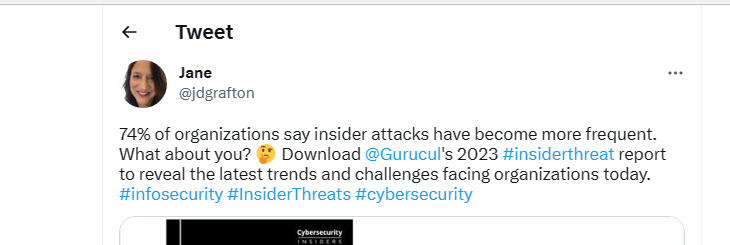
While businesses leave no stone unturned to keep online assets and data protected from outsider threats, they often neglect the dangers sitting right under their noses. Yes, indeed. Internal resources and the workforce are also a threat to sensitive information.
Honestly speaking, insiders have to make fewer efforts to exploit a business’s digital assets because they know operations, security measures adopted, and even passwords of essential data/networks/databases/email accounts/servers. Hence, businesses should never give full authority to one’s hand and deploy viable practices to avoid insider security threats.
Let’s get deeper into the topic and learn 10 best practices to help you do this well.
Insiders Can Be Dangerous
History has witnessed various incidents where a company faced serious security threats from insiders and even lost vast amounts of money and data. Let’s have a look at a few.
- Chase Manhattan Bank lost nearly $150,000 as one of its employees misused the credit card details of many customers. [Documented NY]
- Lance, a North Carolina-based company, had to face a severe drop in sales because one of its programmers placed a logic bomb in the computers of the company’s sales representatives. He did so because of a demotion that he never anticipated.
- A skilled and aggrieved technical employee of a renowned defense contractor introduced a logic bomb. As a result, the contractor lost $10 million and the auto layoff of 80 employees. The aftermath of the attack created colossal havoc.
- GTE lost revenue of more than $200,000 because one of its employees at the support center wiped out crucial data.
- In 2019, there was a massive virus attack on the city of Akron, Ohio, because two trusted employees accessed fake invoices via spam emails. [Crain’s Cleveland Business]
The above is just the tip of the iceberg. The accurate picture is broader than you think. If you refer to the ‘Commonsense Guide to Prevention and Detection of Insider Threats’ report by CERT/CC and CSO Magazine, you will learn that insiders conduct nearly 20% of electronic crimes.

The same report revealed insiders have a significant advantage over outsiders because they have direct access to databases, networks, servers, and other critical IT resources. So, taking adequate measures to control security threats from insiders is very important.
10 Ways To Prevent Computer Security Threats From Insiders
Insider threats to computer and IT security are driven by various technical, organizational, and behavioral issues. As one plans to control these dangers, paying attention to all these aspects is important.

It’s not a single-person job. Top management, HR, CISOs, and other IT security staff must work together to control insider threats. They should use adequate technologies and techniques during the process.
Here are a few tips that might help:
#1 – Adopt Zero Trust policy
Giving complete control to one employee and trusting them altogether is the worst mistake that an organization can make. Using a Zero Trust policy is the first and foremost step to take as and when insider threats should be under control.
This is one of the most renowned security architectures that involve periodic authentication, authorization, and verification of all outsiders and insiders.
Each time an insider or outsider needs access to a server/database/network, validation for security configuration will be performed. It monitors the network traffic of a corporation, limits access, and verifies the network resource at regular intervals. It prevents any insider from exploiting company resources.
#2 – Conduct periodic security awareness programs
Education is the best weapon. Organizations should conduct regular security awareness programs to ensure employees know the importance of adopting the best IT security practices. It’s shocking to know that not every insider threat is well-planned. In fact, the majority of them happen accidentally.
Incidences like using weak passwords, handing over their login credentials to someone non-trusted person or resource, accessing mission-critical information on a non-secured internet connection, and accessing any malicious website are vital reasons behind many cybersecurity threats.

Because of these acts of carelessness, insiders grant cyberpunks an opportunity to exploit an organization’s data. This way, your employees are not conducting an attack but creating an opportunity for outsiders.
To avoid this, the only viable means is to make people aware of your employees about what it means to adopt best security practices. You must conduct workshops and training programs. Regularly assessing security practice adoption is useful to ensure that conveyed practices are routinely adopted.
#3 – Use threat modeling
It’s essential to determine the threat landscape of an organization because doing so will help you understand how much area you have to protect and how much effort it will require. For this, threat modeling is a great option.
For those who don’t have any idea about it, it’s a viable way to secure systems and data with the help of hypothetical scenarios, testing, and system diagrams. It uses means like risk assessment, corrective action suggestions, and early vulnerability detection.
With this approach, businesses can easily spot the insiders that will likely cause an attack and on which assets. When you have this information, applying adequate security controls is effortless.
#4 – Encourage the use of best computer security practices
To avoid unintentional insider attacks, organizations have to ensure that the employees use best security practices such as using strong passwords, changing passwords frequently, using MFA, and deploying antivirus software. With all these moves, employees will manage to reduce the ill-usage of computers and stored data.
#5 – Introduce your Team to the best technologies
You must encourage employees to use technology like a VPN or proxy server while accessing geo-restricted websites or webpages, especially when using their own devices to access business data.
Proxy service server does a great job of keeping the real IP address hidden and avoiding the risks involved with an exposed IP address. VPN does the same job. Both technologies greatly help keep the original IP address hidden to prevent tons of hassles.
#6 – Make efforts to prevent remote attacks
While your employees are working remotely and out of the reach of the secure enterprise network, it’s important to keep a watch on remote insider attacks. Using layered defense is the best move to make here. It combines activities like periodic logging, monitoring, and auditing of online activities of remote employees.
Doing so will make insiders come out of the bubble that no one will monitor them because they are not in the office. They will become conscious and attentive toward their activities. Organizations can also deploy standard remote access policies and practices and instruct all remote employees to adhere to them by all means possible.
#7 – Regularly monitor the employee activities
It’s been observed that there are specific behavioral changes in the employees planning an insider attack. For instance, they become more concerned about their actions and feel irritated being constantly monitored or questioned.
This behavioral monitoring can help organizations prevent a huge mess from taking place. Hence, it’s highly recommended to have standard protocols to monitor employees’ behavior and take adequate actions upon identifying any disruptive activity or action.
What’s worth noting here is that employee activities should be monitored at both network and host levels. Missing out on a single level will put your efforts in vain.
#8 – Follow standard employee IT termination process
It’s a prevalent practice for employees to leave one organization and join another. Upon the termination of employment or contract of a person, their IT access rights and controls must end too.
One must not wait for long to disable the access rights of that employee.
Access should be restricted or limited from when an employee puts down his papers. It’s because there are always certain risks of data misuse during the last days of employment. Organizations must ensure that IT termination is taking place at every possible level, including systems, networks, servers, databases, and physical assets.
#9 – Keep a proactive insider threat detection governance in place
A robust insider threat detection governance program helps control insider threats. It should start with an active malicious code review engagement process. You must ensure that malicious code review is done secretly and by a limited team.
Only highly trusted employees should be part of this team, and enough zero-trust security measures should be adopted. Regular threat governance is a viable way to identify insider threats early and control the damage.
#10 – Give SIEM a try
SIEM, or Security Information and Event Management, is an innovative technology businesses can use to control insider threats.
The tool provides you with a centralized platform to monitor the employees’ activities at the network, server, databases, and application levels. It eliminates the need to monitor all these assets separately, which is tedious and has high odds of missing out on crucial information. It will make tons of things automated and easy.
Final Say
Protecting computer and IT security is becoming increasingly challenging. It’s because outsiders and insiders are ready to exploit them. It’s important to understand that insider threats have more damage potential as insiders have a deeper understanding of your working security infrastructure and can exploit it in a blink of an eye.
So, businesses must adopt viable practices to keep insider dangers under control. These ten tips are of great help, provided you implement them correctly.
Before you prepare to win a war against outsider threats, ensure your computer security is vital and protected internally. You can’t avoid this because being weak from an insider is worse than anything else.




